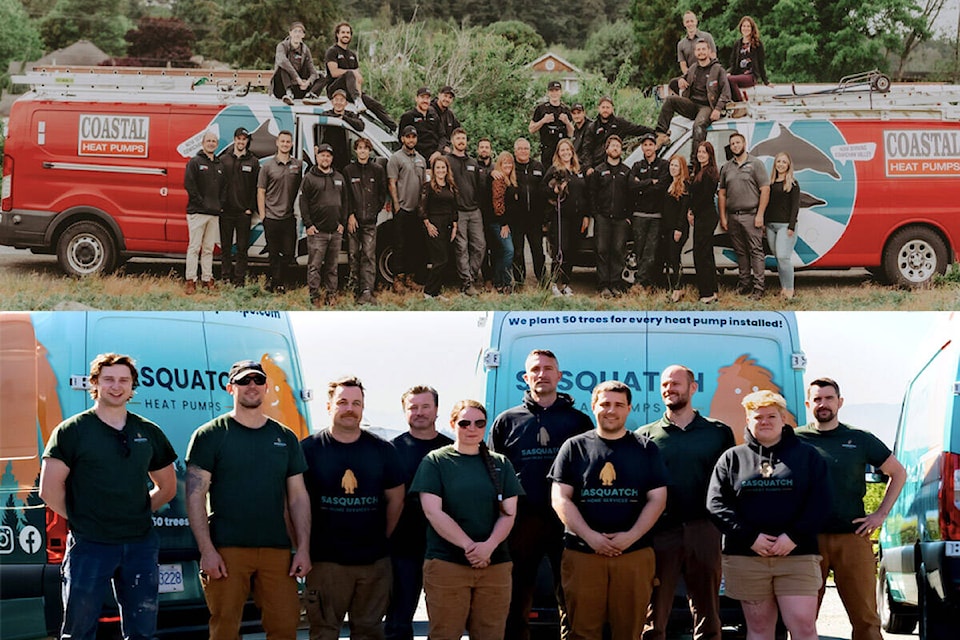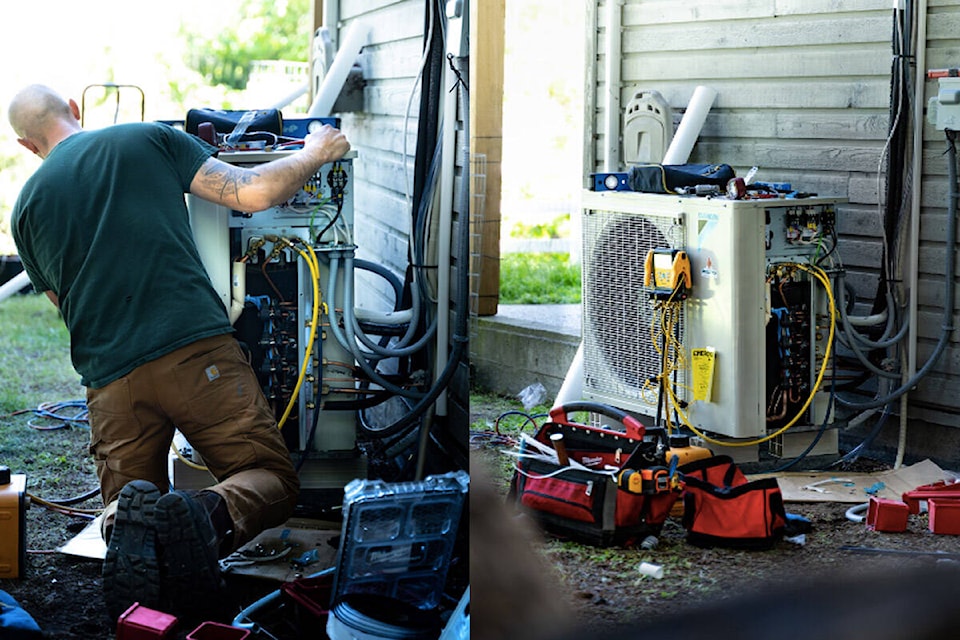After the 2021 heat dome brought punishing temperatures to Victoria’s usually temperate shores, Jordan Caton’s clients told him they slept in crawl spaces or in their car with the air-conditioning on to beat the heat.
“That’s how bad it was and that’s how much people are realizing ‘Hey we do not want to deal with that again,’” the co-owner of Coastal Heat Pumps said.
Caton and Dale Morton of Sasquatch Heat Pumps, another Greater Victoria-based installer, are seeing a strong demand for the temperature-control technology on the South Island and the two companies are hearing similar reasons for why homeowners are making the switch.
Those motivations include lower energy bills, getting off less-efficient and fossil fuel-burning systems, getting cooling amid warming summers and taking part in the move to electrification. Despite the similar reasoning from those wanting a heat pump, a report found uptake of the electric heating and cooling systems isn’t uniform across the Capital Regional District (CRD).
Colwood and View Royal lead the region in uptake, with almost 10 per cent of both communities’ buildings being equipped with heat pumps, according to the final report of the Heat Vulnerability Data and Analysis Project, which was compiled for the CRD. Colwood also had the highest uptake among single-detached homes, while almost a third of View Royal’s multi-unit buildings are equipped with heat pumps.
Victoria, Saanich, Esquimalt, Central Saanich and Oak Bay had some of the lowest uptake rates, ranging from three to six per cent.
The report found CRD communities should consider local subsidies for heat pumps, which could be targeted at certain demographics and buildings more at risk from extreme heat. Several CRD municipalities have offered top ups of $350 for residents taking advantage of rebates from upper levels of government.
A Saanich heat pump program currently offers up to $12,000 at zero per cent interest financing, while a Victoria one that ran from 2018 to 2022 dolled out $450,000 in top-up incentives to 266 homes that switched from fossil fuel systems.
Coastal Heat Pumps is based in Victoria but its crews are serving customers everywhere south of Ladysmith on daily basis. Caton said the industry is going strong right now as people are looking to get off fossil fuels or are just wanting greener living in general.
People are becoming more conscious about the environmental impact of gas or oil heating, along with less-efficient baseboard systems, but get cooling at the same time with a heat pump is also enticing for them, Caton said. He saw demand pick up during the pandemic as people stuck inside became concerned about their home’s air quality.
That period also coincided with major heat waves and cold winters that piqued interests in heat pumps even further, he said.
People’s motivations also change with the seasons. Caton said more people call them about cooling during the warmer months, especially if they live in upper floors of older condos that don’t have air conditioning.
Morton of Sasquatch Heat Pumps recalls how just 10 years ago, people would say you didn’t need air conditioning in Victoria, but he said that sentiment has changed.
“People are seeing that climate change is having a bigger effect on our summers and their homes are becoming less comfortable,” he said.
When fall rolls around, Sasquatch’s clients are usually concerned about their inefficient baseboards leading to higher bills over the winter. After moving to the region and seeing how common those systems were, Morton soon realized many on the South Island were still using another inefficient system - oil heating.
“It’s horrible, it’s costly, they’re not environmentally friendly,” he said of the oil systems.

While heat pumps offer a dual use, making the switch also gives people more peace of mind knowing they’re not burning a tank of oil in their home.
“If you just want to stop burning oil, you’re also going to be happy when it’s 35 degrees and you’re sleeping like a baby because your home is comfortable,” Morton said.
Helping customers transition to less-polluting options is just one way Morton has tried to instill an environmental focus into Sasquatch’s operations.
The local company plants 50 trees in B.C.’s wildfire affected areas for every install, leading to 13,000 plantings last year. It also helped add thousands of kelp plants to the Sunshine Coast’s “seaforestation” efforts.
“I really wanted to create something that was a win-win for everyone,” Morton said.
The two installers said they can see why uptake currently leans toward the West Shore, given the number of newer homes being built there but also because the area has many B.C. box-style homes that are easier to retrofit.
However, both companies said there’s demand all across the South Island, which they expect to pick up even further with expanded rebate opportunities.
The federal and B.C. governments recently announced a combined $255 million in funding for a heat pump rebate initiative that aims to lower energy bills, reduce pollution and provide people with cooling amid warming temperatures.
Under the new initiative, low- and middle-income households could be eligible for between $12,000 and $24,000 in rebates for heat pump installations and associated electrical upgrades. Exact rebate amounts depend on where applicants live and the number of people in their home.
Previous BC Hydro and provincial programs awarded $6,000 – not including municipal top ups – for those switching off natural gas, propane or oil heating, while a program geared toward lower-income households delivered $9,500 for heat pumps.
“Obviously cost is a big factor for everybody and when the government steps up and puts the money into it, generally people are all about jumping into it,” Caton said.
Moreton said governments continuing to offer rebates creates a boost for his industry – one that’s expected to keep growing.
“The adoption rate is accelerating as time goes on, as people realize this is the path forward,” he said.
“It’s only a matter of time until everything is converted over. Heat pumps are the future.”
READ: B.C. communities need to prep for heat dome-level events annually: doctors



